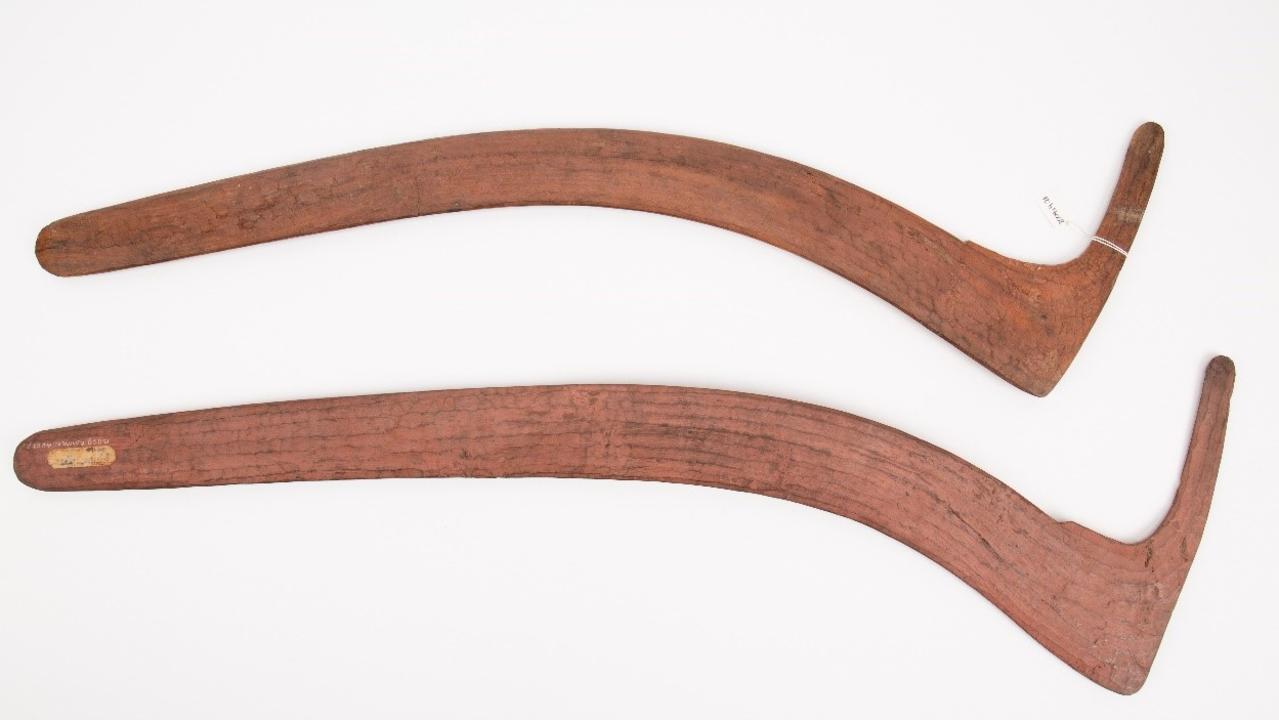Artefacts collected a century ago to be returned to NT community
A total of 10 Indigenous artefacts collected in the early 1900s will be repatriated to the Warumungu community in the Northern Territory after two New Zealand museums agreed to their return

READING LEVEL: GREEN
After a year of negotiations, four cultural artefacts* will be returned to a First Nations community in the Northern Territory.
The Auckland War Memorial Museum agreed to repatriate* the four objects – a cutting tool, an axe and two hooked boomerangs – after talks with the Australian Institute of Aboriginal and Torres Strait Islander Studies and the Warumungu community.

The artefacts were collected by anthropologist* Sir Walter Baldwin Spencer (1860-1929), who was known for his work with Indigenous communities in Central Australia, including the Warumungu people.
Along with Francis Gillen, Sir Spencer collected over 6000 items from Central Australian Indigenous communities in the early 1900s.

The AIATSIS return of cultural heritage* team works to identify objects held in collections outside Australia and began discussions with the Auckland War Memorial Museum in September last year.
In June, the museum’s board of trustees endorsed* the repatriation request for the four items to return to the Warumungu community near Tennant Creek.

“We know that (the artefacts) belong to Warumungu people as the new generation,” Warumungu representative Michael Jones said.
Mr Jones described the artefacts as “precious” to the Warumungu people as they were passed down through the generations.
Describing the care and craftsmanship* used to carve them, Mr Jones said, “(The boomerang) must have taken him six months or even more.”

The decision comes after the AIATSIS last week announced the return of six objects to the Warumungu people which were being held at the Otago Museum in Dunedin.
Indigenous Affairs Minister Linda Burney described the return of the items as an important step in reconciliation*.
“It supports the transfer of knowledge, cultural maintenance, restoration* and revitalisation* for future generations,” Ms Burney said.
“I would also like to extend my heartfelt gratitude to the museum for the good-faith return of these items – a move that recognises the importance of cultural heritage to identity.”

AIATSIS CEO Craig Ritchie said while the items were given freely by Warumungu community members, their return was a recognition of their importance to the community.
“As well as alerting communities to their cultural heritage held in offshore* collections, the AIATSIS (return of cultural heritage) program aims to help those collecting institutions to understand and to respect the wishes of the source communities,” Mr Ritchie said.
GLOSSARY
- artefacts: objects made by people, like tools and decorations, especially of historical interest
- repatriate: return someone or something back to the country they came from
- anthropologist: scientist who studies human customs, beliefs and relationships
- heritage: cultural features of a society, its traditions, languages, monuments of the past
- endorsed: official or formal statement of approval or support for something or someone
- craftsmanship: skill at making things, expertise with which something was made or done
- reconciliation: strengthening relationships between Aboriginal and Torres Strait Islander peoples and non-Indigenous peoples
- restoration: bringing back to an earlier position or condition
- revitalisation: process of making something grow, develop or become successful again
- offshore: overseas, a foreign country
EXTRA READING
Kimberley cave reveals ancient bone tools
Artefacts unearthed from old Melbourne slum
PM paves way for Voice to Parliament vote
QUICK QUIZ
- Which four items will be returned to the NT from the Auckland War Memorial Museum?
- How many items did Sir Walter Baldwin Spencer collect?
- Sir Spencer acquired these items from Central Australia across what period?
- The artefacts belong to which Indigenous community in which state or territory?
- Warumungu representative Michael Jones suggested the boomerang took how long to carve?
LISTEN TO THIS STORY
CLASSROOM ACTIVITIES
1. Return of significant items
The Kids News article states that it took a year of negotiations to organise the return of these culturally significant items back to the Warumungu community.
What sort of issues might these negotiations have covered to ensure all parties were happy to return the items back to the First Nations people? List the issues below:
–
–
–
–
Time: allow 20 minutes to complete this activity
Curriculum Links: English; History; Personal and Social; Critical and Creative Thinking
2. Extension
How do you think these artefacts ended up in the Auckland War Memorial Museum?
If something important and sentimental to your family ended up in another country, would you like some assistance to see it returned? Explain your answer.
Time: allow 10 minutes to complete this activity
Curriculum Links: English; History; Personal and Social; Critical and Creative Thinking
VCOP ACTIVITY
What happens next?
Imagine this story is part of an animated series made up of three cartoons. The three cartoons tell the complete story and this article is only Part 1. Think about what the rest of the story could be and draw the next two cartoons that tell the story.
Time: allow 30 minutes to complete this activity
Curriculum Links: English; Visual Arts; Visual Communication Design; Critical and Creative Thinking
